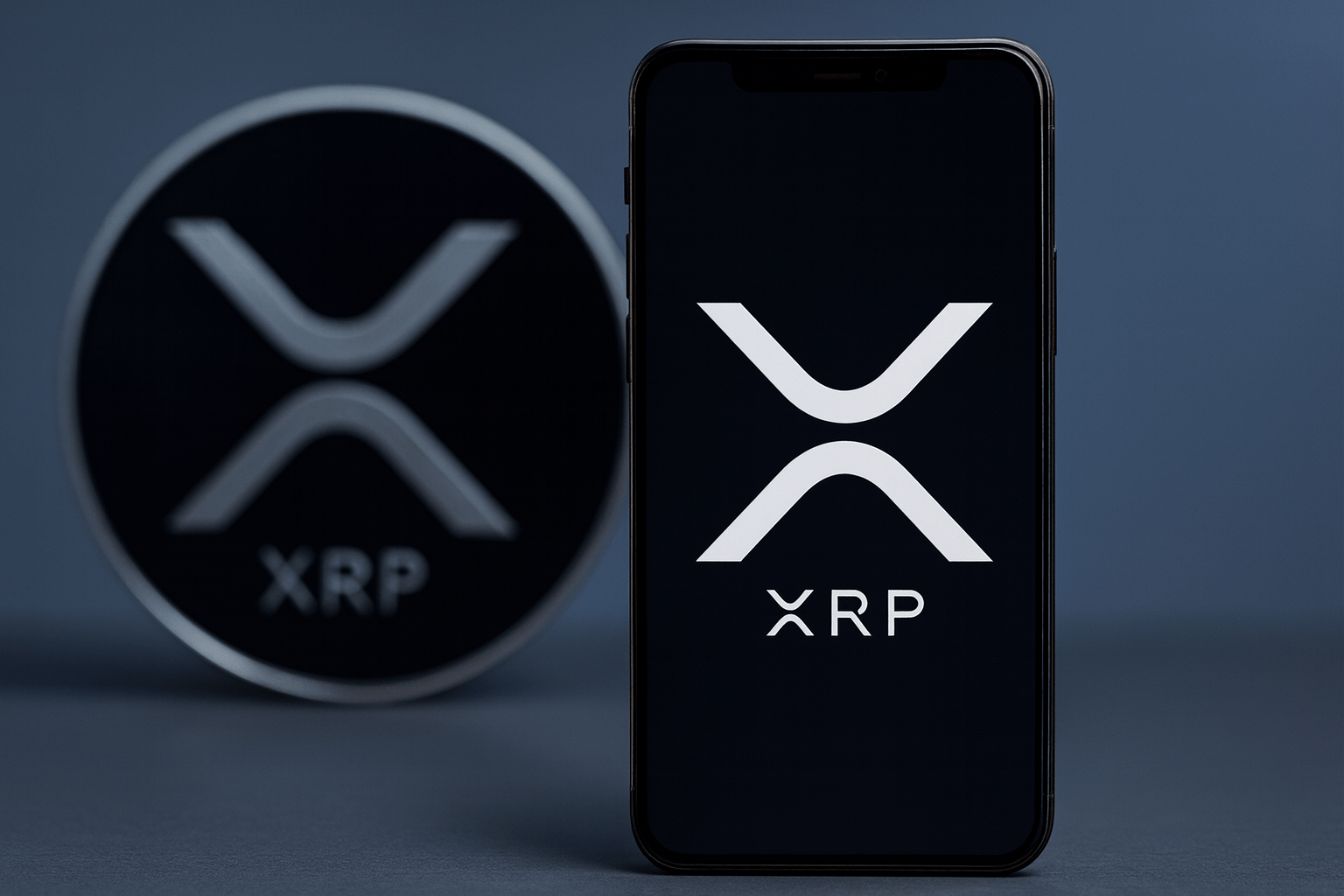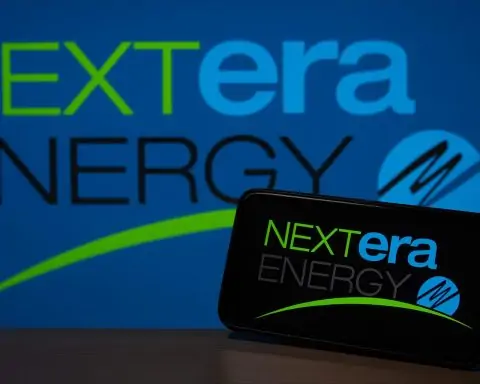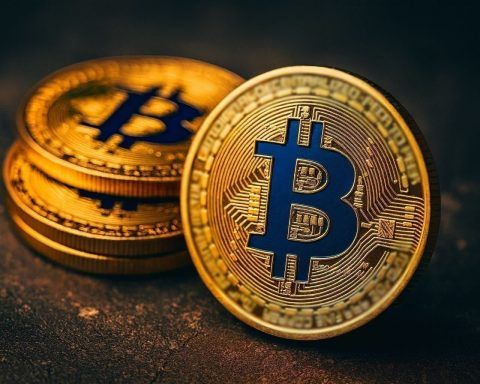- XRP Cracks $3 Support: Ripple’s XRP token plunged nearly 4% on Oct. 7, dipping from above $3 to around $2.85 amid a broad crypto market pullback [1]. The sell-off triggered roughly $500 million in bullish crypto positions (long bets) to liquidate as markets turned risk-off [2]. Traders are now watching if XRP can hold its $2.80–$2.87 support band after this shakeout [3].
- Market-Wide Retreat: The downturn was part of a wider cooldown following last week’s rally. Bitcoin fell about 2.4% on Oct. 7, erasing some gains from its surge past $125K, and the total crypto market cap slipped to roughly $4.18 trillion [4]. XRP’s slide even knocked it down from the #3 spot in market value (it dropped behind Binance Coin and USDT) as profit-taking hit the broader altcoin space [5].
- Whale Dumps Fuel Jitters: Large holders made waves in XRP’s market. Earlier in the week, one whale wallet sold over 160 million XRP (nearly $480 million worth), a move that sent “ripples” of concern through the community [6]. Around the same time, over 320 million XRP (~$950 million) was reportedly transferred to exchanges by whales [7] – seen as a potential precursor to more selling. These big moves raised fears that XRP’s psychological $3 level could be destabilized by heavy profit-taking [8].
- ETF and Regulatory Wildcards: Traders had been betting on major catalysts this month to ignite an XRP rally, but some are now on hold. Notably, speculation was growing that U.S. regulators would approve a spot XRP ETF by mid-October [9]. However, a U.S. government shutdown temporarily paused SEC reviews of crypto ETF applications, likely delaying any decision [10]. Another wildcard is Ripple’s pending U.S. banking charter application (filed in July 2025), with a decision expected in late October [11]. Approval could mark a watershed for integrating XRP into traditional finance – but as of Oct. 8, no verdict had been announced [12].
- Mixed Expert Predictions: Analysts are divided on XRP’s next move. Veteran chartist Peter Brandt warns that XRP is forming a bearish “descending triangle” and could plunge toward $2.20 if prices decisively break below support (he eyes a failure below ~$2.64 as a trigger) [13]. On the bullish side, others argue that a successful ETF launch or major adoption news could catapult XRP to $4+ in the near term [14]. Big-name institutions remain optimistic: Standard Chartered recently projected XRP around $5.50 by end-2025 (and ~$12.50 by 2028) if ETFs and institutional demand materialize [15]. And in an Oct. 5 analysis on Nasdaq, one strategist predicted XRP could double to roughly $5.90 within three years, citing a favorable regulatory shift and Ripple’s growing ecosystem [16] [17].
- Bullish Technical Setup: Despite recent volatility, XRP’s chart is showing a tightening range that many traders view as bullish. The token has been coiling into an ascending triangle pattern for months, with higher lows squeezing against a flat ~$3.00 ceiling [18] [19]. Crypto trader EGRAG Crypto notes this pattern is about 70–80% complete – its “October breakout is looking promising,” he says, projecting a decisive move by late October based on historical breakout timing [20] [21]. Analysts add that a strong push above $3.10–$3.30 resistance (especially on high volume) would confirm a bullish breakout, potentially targeting multi-month highs [22] [23]. Conversely, if XRP slips under key support (around $2.80 or worse $2.64), it could signal a deeper downturn toward the low $2 range [24].
- Long-Term Momentum Intact: Even after its recent dip, XRP remains one of 2025’s top crypto performers. As of Oct. 8, it was stabilizing in the mid-$2.80s [25] – still up about 38% year-to-date and an astounding 440% higher than a year ago (when it traded near $0.50) [26]. This surge has been fueled by a series of positive developments: Ripple’s August 2025 legal victory over the SEC removed a major regulatory cloud over XRP (the case was settled, affirming that exchange sales of XRP are not securities) [27]. Ripple has also rolled out new products like a stablecoin (RLUSD) and clinched partnerships in banking and payments, signaling growing utility for XRP [28] [29]. Such fundamentals have many investors confident that, after the current turbulence, XRP could be gearing up for its next leap.
XRP Slides Under $3.00 as Crypto Markets Pull Back
After a strong start to “Uptober,” XRP’s rally hit a wall in the first week of October 2025. On Oct. 7, the price of XRP sank below the psychological $3.00 level, catching many bulls off guard [30]. The token fell from around $3.07 at its intraday peak to roughly $2.85 by day’s end [31], a ~4% drop in 24 hours. This decline came amid a broader crypto market pullback – Bitcoin slid about 2.4% that day and other major altcoins like Ethereum also dipped a few percent [32]. The sudden risk-off move followed a week of exuberance that had seen Bitcoin break above $125,000 to a new all-time high (boosting its market cap to a staggering $4.27 trillion) [33]. By Oct. 8, as profit-taking set in, the total crypto market capitalization had cooled to around $4.18 trillion [34].
For XRP holders, the pullback had an extra sting: the coin briefly lost its standing as the third-largest cryptocurrency by market value, slipping down to fifth place as Binance’s BNB and stablecoin USDT inched ahead [35]. This was a striking shift, considering XRP had only recently climbed to #3 amid its late-September rally. The sell-off underscores how quickly sentiment can change in crypto – especially for XRP, which has a history of sudden swings.
One immediate consequence of XRP’s drop was a cascade of forced liquidations in the derivatives market. As prices fell, traders who had piled into bullish leveraged bets saw their positions wiped out. Over $500 million worth of long positions across various cryptocurrencies were liquidated within hours as the market turned south [36]. This kind of rapid unwinding – essentially a mini “long squeeze” – added to the downward pressure on XRP and its peers. Observers noted that many traders had been extremely bullish on crypto going into October, so the reversal triggered a classic shakeout of overleveraged longs. “It was a flush of weak hands after a very strong run,” one analyst remarked, noting that such pullbacks, while painful, can reset the market for a healthier uptrend.
Despite the volatility, XRP managed to find support in the mid-$2.80s. CoinDesk reported that the token stabilized around $2.85, holding above a key support band at roughly $2.80–$2.87 [37]. In fact, by the morning of Oct. 8, XRP was hovering quietly in the $2.85–$2.90 range with reduced trading volume [38]. Bulls defended this region to prevent a deeper slide, at least for the time being. The $2.80 level coincides with late-September lows and has proven to be an important technical floor in recent weeks [39]. “The fact that XRP did stabilize above support afterward is encouraging,” noted a report on Tech Space 2.0, “but it will need follow-through buying to flip the trend upward again” [40]. In other words, a relief bounce alone isn’t enough – bulls must reclaim higher levels to regain momentum.
Whales and Liquidations: Big Players Rock the Boat
Diving deeper into the causes of the drop, many fingers pointed at the actions of whale investors and large institutions. In the days leading up to XRP’s fall, on-chain data detected some massive XRP transfers and sell-offs that spooked the market. Chief among them was a single transaction of 160 million XRP (worth nearly half a billion dollars) from a whale wallet, which was soon followed by that wallet unloading its XRP holdings [41]. This news, first highlighted on Oct. 6, sent shockwaves through the XRP community. Analysts warned that such a large sell order could weaken the token’s $3 support zone if other big holders followed suit [42]. Indeed, almost immediately after the whale dump, traders reported more cautious order flows and a cooldown in buying interest around the $3 level.
Around the same time, tracking services noted that over 320 million XRP (≈$950 million) had moved from unknown wallets onto exchanges within a 48-hour window [43]. Typically, when whales send coins to exchanges, it’s interpreted as a sign they may intend to sell (as opposed to storing coins off exchanges for the long term). This fueled further chatter that “smart money” might be taking profits after XRP’s big run-up in September. The combination of these whale moves created an atmosphere of fragility – traders grew wary that a cascade of selling could be imminent, which in turn made many short-term speculators quick to hit the sell button at the first sign of trouble.
The fear became self-fulfilling on Oct. 7 as prices started to slip. Once XRP cracked below ~$2.95, stop-loss orders likely kicked in and leveraged long positions started liquidating, adding to the downward momentum. As mentioned, the crypto derivatives market saw about $500 million in long positions liquidated across assets during the day’s downturn [44]. Such liquidations occur when margin positions are forcibly closed by exchanges, usually cascading rapidly once key price levels break. In XRP’s case, the break of $2.99 (a level that had acted as resistance-turned-support in early October) and then $2.90 appeared to be triggers for these automatic sell-offs.
It’s worth noting that whale-induced volatility is not new to XRP. The token’s relatively concentrated supply – the top 100 XRP addresses hold a large portion of the supply – means that movements by a few big holders can sway the market. Earlier this year, there were instances of major XRP sell-offs causing double-digit percentage drops, followed by sharp rebounds once the selling cleared. The recent episode seems less severe by comparison (a single-digit percent decline), but it underscores the continued influence of whales. Some community members lamented the overhang of Ripple’s own holdings and distributions as well, though Ripple (the company) has been more transparent and steady in its XRP sales since the SEC settlement.
On the flip side, not all whale activity has been bearish. While some big wallets sold, others might have been quietly buying the dip. Data from Santiment (a blockchain analytics firm) indicated that overall sentiment on social media turned extremely bearish during the drop – a sign that many retail traders were panicking [45]. Paradoxically, Santiment noted that such extreme fear can be a contrarian buy signal, as it often marks a short-term bottom when weak hands capitulate [46]. If that pattern holds, whales or institutional players may have used the opportunity to accumulate XRP at a relative discount around $2.80–$2.90. Crypto markets have a way of punishing the many and rewarding the few; in this case, the few might be the patient big players who buy when others are fearful.
ETF Delays and Other Catalysts: Regulatory Clouds Partly Return
Just a week ago, the narrative around XRP was glowing with optimism – much of it tied to regulatory and institutional catalysts on the horizon. Two major developments had XRP traders excited: the prospect of a U.S.-listed spot XRP ETF, and Ripple’s ambitions to become a licensed U.S. bank (via a national charter). Both could be game-changers for XRP by spurring new investment and mainstream adoption. However, by early October, both storylines hit some temporary snags, introducing new uncertainty.
First, the spot XRP ETF hopes. Throughout 2025, crypto investors have closely watched the U.S. Securities and Exchange Commission (SEC) as multiple applications for spot cryptocurrency ETFs (exchange-traded funds) advanced. Bitcoin and Ethereum ETFs were the headliners, but XRP wasn’t far behind – several firms filed proposals for an XRP-backed ETF, betting that the SEC’s legal clarity on XRP (post-Ripple lawsuit) would open the door. Industry analysts, including Bloomberg Intelligence, even assigned a 95% probability that the SEC would approve one or more spot XRP ETFs by late October 2025 [47]. This optimism contributed to XRP’s rally, as traders anticipated a wave of new demand if an ETF launched (since ETFs allow institutional and retail investors to gain exposure more easily).
However, reality intervened in the form of U.S. politics. In early October, the U.S. government entered a partial shutdown, leading to a furlough of many federal employees – including those at the SEC. As a result, the SEC’s review process for crypto ETF applications was essentially frozen during the shutdown [48]. Critical filing deadlines and decision dates in October suddenly became moving targets. For XRP, this meant the expected mid-October decision on a spot ETF (for example, Grayscale’s highly anticipated XRP Trust conversion) was likely pushed back. Crypto news outlet FXEmpire noted that optimism for an October ETF launch was dampened by the shutdown, and all eyes turned to Congress to resolve funding so the SEC could get back to work [49]. By Oct. 8, a Senate vote was scheduled in an attempt to end the shutdown – a key step that could restart the ETF clock if successful [50]. In short, the ETF catalyst is delayed, not denied – but in the fast-paced crypto market, even a few weeks’ delay can curb bullish sentiment.
Meanwhile, Ripple’s separate initiative – seeking a U.S. banking charter – remains another “X factor” for XRP. Ripple applied over the summer to become a national bank (through a special purpose license), which would allow it to offer a wider range of crypto-related banking services and more seamlessly integrate XRP into traditional finance rails. Such a charter, if granted, could make Ripple one of the first blockchain companies to effectively own a U.S. bank, potentially paving the way for XRP to be used in bank settlements or as a reserve asset. Regulators were expected to rule on Ripple’s application by late October 2025 [51]. As of early Oct. 8, no news had come – which isn’t surprising given the complexity and high stakes of that decision.
The market is watching these regulatory threads closely. An SEC approval of an XRP ETF would likely be a bullish bombshell, validating XRP in the eyes of many investors and possibly unleashing significant inflows (Bloomberg analysts estimated $5–8 billion could pour into XRP ETFs in short order if approved [52]). On the other hand, if Ripple’s bank charter gets a green light, it could be equally monumental: it would signal regulatory trust in Ripple and XRP, potentially encouraging banks and fintechs to more openly adopt the token. Either event could be the trigger needed to propel XRP out of its current range and toward new highs.
Of course, uncertainty works both ways. Until these outcomes are clear, some investors prefer to stay cautious. The recent price dip indicates that regulatory hype can evaporate quickly if the timeline disappoints. It’s a reminder that while 2025 has seen huge strides in crypto regulation – not least the conclusion of Ripple’s own SEC lawsuit in August – the market craves concrete results. (The Ripple-SEC settlement in August 2025 officially ended the case with Ripple paying a $125 million fine and no admission of wrongdoing, while gaining clarity that XRP itself is not a security when sold on exchanges [53]. That news sent XRP soaring in late summer.) Now, heading into mid-October, traders are effectively in a holding pattern, scanning news feeds for any hint of ETF approval or bank charter progress.
Interestingly, even the political climate has become a talking point for XRP. On Oct. 6, former U.S. President Donald Trump – who is seeking another term – met with Ripple’s leadership and subsequently made public pro-crypto comments [54]. Trump’s remarks, praising blockchain innovation and hinting at XRP’s potential role in modernizing finance, gave XRP believers another dose of optimism. It signaled a stark shift from the previous U.S. administration’s stance on crypto. In fact, under President Trump’s current campaign promises, he has vowed to make America “the crypto capital of the world” and has nominated a crypto-friendly SEC chair (Paul Atkins) [55]. Such political support, if it materializes into policy, could further improve the regulatory backdrop for XRP. The Motley Fool’s analysis on Nasdaq noted that the SEC under new leadership reversed several anti-crypto policies, including rescinding a rule that discouraged banks from crypto custody – a change expected to catalyze institutional adoption [56]. All of this paints a picture where the U.S. might soon provide a much more favorable environment for Ripple and XRP to thrive.
Bulls vs. Bears: Experts Debate XRP’s Trajectory
With XRP at a crossroads, analysts and investors are offering widely differing forecasts. Will XRP explode upward again, or is the recent drop the start of a deeper decline? The answer, it seems, depends on whom you ask.
On the bearish side, some technical analysts see troubling patterns on XRP’s chart. Famed trader Peter Brandt, known for predicting past crypto corrections, pointed out that XRP’s series of “lower highs” since late August forms a descending triangle – a pattern that often precedes downward breaks [57]. Brandt has cautioned that if XRP cannot hold support around the high-$2 range (he specifically cites ~$2.68 as a line in the sand), the coin could slide sharply toward $2.20 or even lower [58]. His view is that the recent rally may have been a false top, and without a fresh catalyst, XRP might re-enter a broader downtrend. Supporting this cautious outlook, some traders note weakening momentum indicators and waning trading volumes in early October – signs that bullish conviction has ebbed since the September peak near $3.40. In essence, the bears argue that XRP needs more than hype to sustain its gains, and absent a new narrative, a deeper correction is possible, especially if general crypto market conditions deteriorate.
In contrast, the bullish camp remains upbeat, often pointing to the very catalysts discussed earlier (ETFs, Ripple’s growth, etc.) as reasons XRP’s run isn’t over. For instance, analysts at FXLeader and CoinRepublic have suggested that if any positive ETF news hits or if broader market sentiment improves, XRP could rapidly rally back above $3 and test its year-to-date highs around $3.30–$3.40 [59] [60]. Beyond that, some foresee new highs: one crypto strategist speculated that XRP could reach about $5.89 in a bullish scenario where an ETF launch spurs major institutional inflows [61]. This specific figure might sound odd, but it was derived from technical extension levels and the scale of prior XRP price cycles – in short, if XRP breaks out, the move could be explosive.
Traditional financial institutions have also weighed in with impressive targets. Standard Chartered, a global bank that has researched crypto, made headlines by forecasting XRP at $5+ by end of 2025, assuming continued adoption by institutions and (importantly) the approval of ETFs to broaden market access [62]. Their longer-term view sees XRP potentially hit $10–12 by 2028, which implies well over a 300% gain from current levels [63] [64]. The bank’s analysts argue that as payment tokens go, XRP has one of the strongest use-case narratives (fast, low-cost transfers) and now, with legal clarity post-SEC case, it could attract significant investment that previously stayed away due to regulatory fears [65].
Another interesting perspective comes from Trevor Jennewine, writing for The Motley Fool (syndicated on Nasdaq). He takes a somewhat moderate bull case: combining expectations of a slower-growing crypto market overall with XRP’s ability to outperform within that market, Jennewine projects that XRP could roughly double to around $5.90 by 2028 [66]. That’s about +100% in three years, equating to ~26% annualized growth – notable, but far less heady than the 10x or “to the moon” predictions one sometimes hears. His rationale hinges on a “favorable regulatory backdrop” emerging (thanks to changes under the current U.S. administration) and Ripple’s continued expansion of its payment ecosystem (e.g. Ripple’s new stablecoin and partnerships) [67] [68]. At the same time, he cautions that XRP has been and will remain highly volatile – noting it has already seen multiple 20%+ drawdowns from highs in just the past year [69]. In other words, even if XRP is on a path to grow further, investors should brace for bumpy rides.
So, who’s right – the bulls or the bears? In all likelihood, both, in different time frames. In the immediate term, if XRP fails to hold that mid-$2 support zone, the bearish scenario could play out and send the price closer to $2.50 or below, confirming a larger correction. But if upcoming news (say, an SEC approval or a Ripple bank charter) flips the script, bulls could quickly regain control and push XRP back above $3, invalidating the triangle breakdown that Brandt and others fear. The presence of large short-term catalysts means the coin’s direction can literally turn on a headline.
It’s also possible XRP remains range-bound for a while – neither breaking down nor breaking out – especially if the broader crypto market consolidates after its big Q3 run. Some analysts expect choppy trading between roughly $2.70 and $3.30 until a decisive piece of news arrives. During this period, sentiment indicators like social media “fear vs. greed” may be telling: right now, as mentioned, retail sentiment is quite bearish (high fear) [70], which contrarians actually view positively. If that bearish sentiment starts to abate (e.g. if we see excitement build again on Twitter/XRP forums without a price move), it might indicate the opposite – that a relief rally is fading. Hence, savvy traders are watching not just the charts, but also the community buzz and even on-chain metrics (like whale exchange flows) to gauge the next direction.
Technical Outlook: Compression Before the Storm?
From a technical analysis standpoint, XRP’s price action is nearing a make-or-break point. For most of 2025, XRP has been in an uptrend (with plenty of volatility along the way). After peaking near $3.40 in late August, it pulled back in September and then oscillated roughly between $2.70 and $3.30. This has formed what chartists identify as a classic ascending triangle pattern, characterized by rising lows and a relatively flat resistance ceiling [71] [72]. Essentially, each dip has been higher than the last (showing buyers stepping in sooner), while rallies have been capped around the same high-$3 zone (showing sellers consistently taking profits there). This squeezing price range often precedes a significant breakout – the only question is direction.
Crypto trader EGRAG Crypto, known for technical calls, highlighted that XRP’s triangle has been forming for about a year (since late 2024) and is now roughly 70–80% complete in terms of time progression [73]. Why is that significant? Because, as EGRAG notes, many triangles tend to break roughly 70–80% of the way to the triangle’s apex [74] [75]. In practical terms, XRP is approaching the point where a volatility spike is increasingly likely. According to his analysis, the window for a breakout (up or down) opened in late September (around the 70% mark of the pattern’s timeframe) and extends through late October (the 80% mark) [76]. Beyond that, if somehow the pattern persisted into December (90%+), it would be unusual – typically something’s got to give before then.
The bullish interpretation of this pattern is that XRP is “coiling up” energy for a potentially explosive move to the upside. If the price can decisively break above the triangle’s resistance – which lies roughly around $3.10–$3.30 depending on how one draws the line [77] – it could trigger a flood of buying. Traders often set buy orders above key resistance to catch the breakout, and momentum algorithms might jump in as well. A confirmed breakout (say, a daily candle close well above $3.30) would likely target the next major technical level around $3.66, which is the all-time high from early 2018 that XRP approached this August [78]. Above that, there isn’t much historical resistance until around $4.00. It’s not hard to imagine that if a positive catalyst aligns with a technical breakout, XRP could quickly revisit $4 – a level it hasn’t seen in over five years.
However, the bearish case for the triangle is that these patterns can and do fail, breaking downward. A break below the ascending trendline that defines the triangle’s support (those higher lows) would be a warning sign. Right now, that dynamic support is in the high-$2.70s and rising. Analysts are closely watching $2.80 and especially $2.64 (a prior swing low) as critical levels [79]. A clean break below ~$2.64 would invalidate the series of higher lows – essentially ending the pattern – and could accelerate selling as stop-losses are hit. That’s where scenarios like Brandt’s $2.20 target come into play [80]. It’s worth noting that XRP has strong longer-term support in the low $2s from its trading range earlier in 2025; for much of the first half of the year, XRP traded between ~$1.50 and $2.50 before the summer rally. So, even in a bearish breakdown, those levels might act as a floor absent new negative news.
Technical indicators currently are mixed. Momentum oscillators like RSI (Relative Strength Index) cooled off from overbought conditions in September and have hovered in neutral territory (40–60 range), reflecting the recent consolidation. Volume has been declining during the triangle formation, which is typical – a sign of “compression” as neither buyers nor sellers are aggressively pushing, waiting for a cue. Some analysts have observed a slight uptick in On-Balance Volume (OBV) over the past weeks [81], suggesting that on net, accumulation might be quietly happening even as price goes sideways. This subtle OBV rise implies that the smart money could be positioning for a bullish outcome, buying on dips while volatility is low [82].
Another technical development that garnered excitement was a “golden cross” on XRP’s daily chart in late September – that’s when the 50-day moving average crosses above the 200-day moving average, often interpreted as a bullish signal. Indeed, such crosses in big cryptos have sometimes preceded major uptrends. However, with the recent dip, traders are watching to ensure the MAs don’t whipsaw back. For now, XRP’s 20-day, 50-day, and 100-day averages have converged tightly in the high $2.90s [83], reflecting just how sideways the price action became before this latest jolt. Once a breakout direction is chosen, those moving averages will likely fan out accordingly.
In sum, the technical setup appears ripe for a significant move – aligning with the fundamental catalysts on the calendar. Whether it breaks up or down may hinge on news (ETF approval? macroeconomic shifts?) as much as pure chart dynamics. For traders, it means risk management is key: volatility is likely imminent, so positioning ahead of time involves carefully weighing the upside potential versus downside risk, and perhaps setting alerts around those pivotal price thresholds ($2.80 and $3.10 in particular). As one analyst quipped, “XRP’s chart looks boring right now, but boring often precedes booming – one way or the other.”
Ripple’s Big Picture: Momentum Beyond the Hype
Stepping back from the day-to-day swings, it’s important to recognize how far XRP and Ripple have come – and what that means for the road ahead. Despite the recent turbulence, 2025 has been a landmark year for XRP in terms of both market performance and ecosystem developments.
Market performance first: By early October, XRP was up around 455% year-over-year, vastly outperforming blue-chip peers like Bitcoin (+~97% YoY) and Ethereum (+~85% YoY) [84] [85]. Even after the dip to ~$2.85, XRP’s year-to-date gain stood near 38% [86], handily beating the S&P 500 and many traditional assets. In late September, XRP even notched a post-2018 price record by briefly crossing $3.30. This resurgence has been fueled partly by macro tailwinds (the entire crypto market boomed as inflation eased and investors anticipated future Fed rate cuts), but also by XRP-specific catalysts that restored investor confidence.
Foremost among those was the resolution of the SEC vs. Ripple lawsuit. After nearly three years of legal uncertainty, Ripple’s courtroom battle ended in August 2025 with a settlement that many perceived as a win for Ripple [87]. The SEC formally acknowledged that Ripple’s programmatic sales of XRP (i.e. on exchanges to the public) are not securities transactions – removing the fear that XRP would be deemed an “unregistered security” in secondary markets [88]. Ripple did pay a fine (relatively small in context) and agreed to certain limitations, but the upshot was clarity: U.S. exchanges quickly relisted XRP, and institutional investors who were on the sidelines due to compliance worries felt more comfortable stepping in. This clarity was a major reason XRP’s price exploded over the summer. It’s also what underpins the current push for XRP ETFs – without the lawsuit resolved, that would’ve been impossible.
Beyond legal victory, Ripple the company has been actively expanding its ecosystem, which in turn bolsters the long-term value proposition of XRP. In 2025, Ripple introduced RLUSD, a U.S. dollar-backed stablecoin for its network [89]. Stablecoins are seen as complementary to XRP’s role in cross-border payments, and having a Ripple-issued stablecoin might drive more usage of the XRP Ledger (with XRP potentially functioning as a bridge currency). Ripple also inked partnerships and made acquisitions: for example, they acquired a firm called Rail to enhance crypto-based payments infrastructure, and they’ve been piloting central bank digital currency (CBDC) projects in various countries, often utilizing XRP Ledger technology (if not XRP directly). Ripple’s long-time partner SBI in Japan launched institutional crypto lending services that include XRP [90]. And Ripple even began exploring non-financial use cases like tokenizing real estate and tourism credits on XRP Ledger, hinting at broader adoption of the network.
All these efforts have a common theme – driving utility and demand for XRP. The more banks, fintechs, and enterprises use Ripple’s network for real-world transfers, the more XRP could be needed as a bridge asset (in the case of their On-Demand Liquidity product) or as liquidity in ecosystem projects. Ripple’s CEO, Brad Garlinghouse, has emphasized that recent technical upgrades to the XRP Ledger (such as adding new privacy features and smart contract capabilities) are aimed at making XRP more attractive for large financial players [91]. In early October, as the price wobbled, Garlinghouse and other XRP proponents took to social media to remind everyone of the “fundamentals” – that is, the network’s speed, low fees, and growing developer activity – urging holders not to fixate solely on short-term price [92].
From a macro perspective, if the crypto market remains in a bullish cycle, XRP stands to benefit from the rising tide, but it also has the chance to outperform given its unique catalysts. One consideration is that Bitcoin’s dominance (its share of total crypto market cap) jumped to around 57% during its run-up [93] [94], which historically can precede capital rotating back into altcoins like XRP if Bitcoin’s rally cools. We already saw a hint of that in September when XRP and others surged even as Bitcoin took a breather. Should Bitcoin stall near the $120K-$130K zone, traders might seek the next opportunities in major alts – and XRP is a prime candidate, especially if the ETF narrative rotates from Bitcoin to XRP.
However, one cannot ignore broader economic factors. The crypto market in late 2025 is influenced by global financial conditions: interest rate expectations, inflation data, and even geopolitical events. In early October, for example, concerns about stagflation (rising oil prices and slowing growth) and U.S. fiscal uncertainty (battles in Congress over spending) contributed to a risk-off mood in equities and crypto alike [95] [96]. If such macro jitters persist, they could cap XRP’s upside in the near term regardless of its specific positives. On the flip side, any signals of the U.S. Federal Reserve pivoting to rate cuts (which some predict for 2026) could ignite a fresh wave of investment into crypto, giving XRP another tailwind. In fact, some analysts have speculated that if the Fed were to cut rates sooner due to economic weakness, it might accelerate flows into assets like XRP, as investors hunt for higher returns in alternative markets [97].
In conclusion, XRP finds itself at a pivotal moment. The recent drop below $3.00 has injected a dose of caution, but by no means erased the progress of 2025. The asset’s resilience – still dramatically higher than a year ago – reflects both the hard-fought victories Ripple has achieved and the market’s forward-looking bet on what’s to come (ETFs, banks, and more). Over the next several weeks, we’ll likely see high volatility as speculation and news intermingle. A major bullish catalyst could send XRP zooming upward to new multi-year highs, while any negative surprises or simply a lack of good news might prolong its consolidation or deepen the correction.
For the public and investors, the key is to stay informed and measured. Quote from an expert: “XRP is at an inflection point – one that’s been building up for months,” said Mateusz Kaczmarek, a crypto market analyst at Tech Space 2.0. “Either we get that breakout above stubborn resistance with help from a fundamental trigger, or we could see a deeper pullback. In either case, the long-term trajectory still looks strong given how much the regulatory landscape has improved for XRP.” [98] [99] This encapsulates the sentiment of many experts: short-term uncertainty, long-term potential.
As of now (Oct. 8, 2025), XRP is hovering around $2.85 per token [100], and all eyes are on the upcoming developments. Will beleaguered bulls regain control and send XRP soaring on the back of an ETF approval or other good news? Or will wary bears prove correct, driving prices to a more “fundamental” low before the next leg up? The only certainty is that XRP’s journey is far from over, and if history is any guide, the coming chapters won’t be dull. In the fast-moving crypto saga, Ripple’s XRP is poised for its next big test – and opportunity – just around the corner.
Sources: CoinDesk [101] [102]; Tech Space 2.0 [103] [104] [105] [106]; Nasdaq/Motley Fool [107] [108]; TipRanks [109] [110]; FXEmpire/FXLeaders [111] [112]; Coincentral/CoinRepublic [113] [114]; etc. (October 2025)
References
1. ts2.tech, 2. www.coindesk.com, 3. www.coindesk.com, 4. ts2.tech, 5. ts2.tech, 6. ts2.tech, 7. ts2.tech, 8. ts2.tech, 9. ts2.tech, 10. ts2.tech, 11. ts2.tech, 12. ts2.tech, 13. ts2.tech, 14. ts2.tech, 15. ts2.tech, 16. www.nasdaq.com, 17. www.nasdaq.com, 18. www.tipranks.com, 19. www.tipranks.com, 20. www.tipranks.com, 21. www.tipranks.com, 22. www.tipranks.com, 23. ts2.tech, 24. ts2.tech, 25. ts2.tech, 26. ts2.tech, 27. ts2.tech, 28. ts2.tech, 29. ts2.tech, 30. ts2.tech, 31. ts2.tech, 32. ts2.tech, 33. ts2.tech, 34. ts2.tech, 35. ts2.tech, 36. www.coindesk.com, 37. www.coindesk.com, 38. ts2.tech, 39. ts2.tech, 40. ts2.tech, 41. ts2.tech, 42. ts2.tech, 43. ts2.tech, 44. www.coindesk.com, 45. ts2.tech, 46. ts2.tech, 47. ts2.tech, 48. ts2.tech, 49. ts2.tech, 50. ts2.tech, 51. ts2.tech, 52. ts2.tech, 53. ts2.tech, 54. ts2.tech, 55. www.nasdaq.com, 56. www.nasdaq.com, 57. ts2.tech, 58. ts2.tech, 59. ts2.tech, 60. ts2.tech, 61. ts2.tech, 62. ts2.tech, 63. www.nasdaq.com, 64. www.nasdaq.com, 65. ts2.tech, 66. www.nasdaq.com, 67. www.nasdaq.com, 68. www.nasdaq.com, 69. www.nasdaq.com, 70. ts2.tech, 71. www.tipranks.com, 72. www.tipranks.com, 73. www.tipranks.com, 74. www.tipranks.com, 75. www.tipranks.com, 76. www.tipranks.com, 77. ts2.tech, 78. ts2.tech, 79. ts2.tech, 80. ts2.tech, 81. ts2.tech, 82. ts2.tech, 83. ts2.tech, 84. ts2.tech, 85. ts2.tech, 86. ts2.tech, 87. ts2.tech, 88. ts2.tech, 89. ts2.tech, 90. ts2.tech, 91. ts2.tech, 92. ts2.tech, 93. www.coindesk.com, 94. www.coindesk.com, 95. ts2.tech, 96. ts2.tech, 97. www.tipranks.com, 98. ts2.tech, 99. ts2.tech, 100. ts2.tech, 101. www.coindesk.com, 102. www.coindesk.com, 103. ts2.tech, 104. ts2.tech, 105. ts2.tech, 106. ts2.tech, 107. www.nasdaq.com, 108. www.nasdaq.com, 109. www.tipranks.com, 110. www.tipranks.com, 111. ts2.tech, 112. ts2.tech, 113. ts2.tech, 114. ts2.tech










